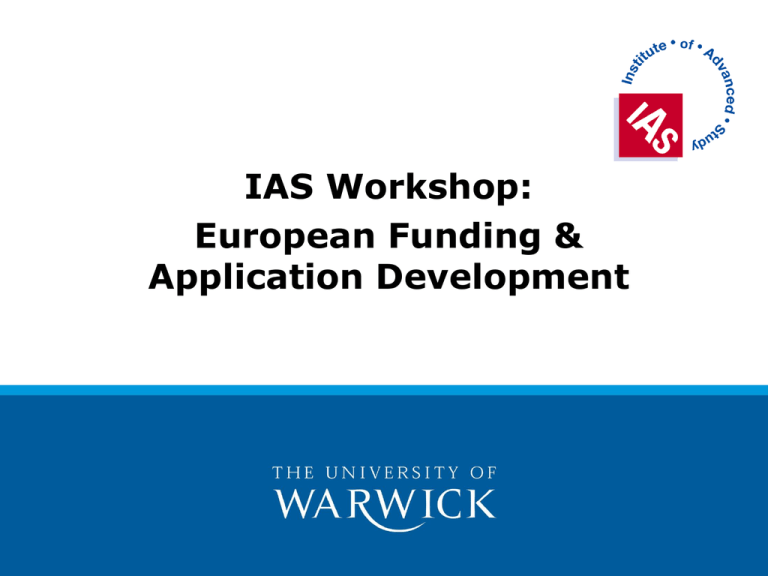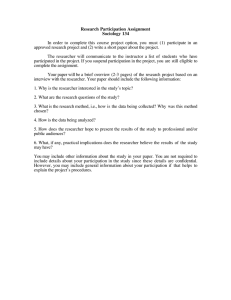IAS Workshop: European Funding & Application Development
advertisement

IAS Workshop: European Funding & Application Development Agenda 11am 11:15am 11:40am 12pm Tea & Coffee Introduction to EU Funding – Nikki Muckle Preparing and ERC application – John Burden ERC Case Study – Dr Theo Karavasilis 12:30- 1:20pm LUNCH 1:20pm 1:50pm 2:40pm Leverhume Fellowship Case Study – Dr Wehling Giorgi Track Record analysis Lay Summary review 3:15 – 3:30pm Tea & Coffee 3:30pm 4pm What makes a good proposal? Career Development Plan Making the Most of a Good Idea Here’s all the minute details I’m not sure…. . Blah, blah Ramble, ramble I was thinking, this may be a good idea, but don’t worry if it’s not your cup of tea Possibly this might work Maybe I could… Have I told you what my colleague is doing GOOD IDEA Track Record – Part 1 Read through the handout and in pairs write down responses to each of the following questions: 1. What do you like about this track record? 2. What would you do differently? 3. What is this person’s key strength? 4. On a scale of 1-10 how confident are you that this person is a top early career researcher? Why/Why not? Track Record – Part 2 In pairs discuss and prepare responses to the following: 1. Compared to the first track record, which format do you prefer and why? 2. How helpful is Version B in determining whether the candidate is a successful researcher? Why? 3. What would you want to see in this document to help your assessment of the candidate? Track Record – Part 3 1. Go through the text and highlight the wording that helps convey the candidate’s credibility regarding his achievements. 2. Which of the 3 documents is the most helpful in helping you to assess the candidate’s capability to successfully lead a research project? Making the Most of Your Past 1 applicant, 3 versions of the truth! • • • • Substantiate your claims Provide evidence of achievements Convey progression and diversity Don’t make the reviewer work hard Lay Summary Read the Lay Summary A and mark it with a score from 1-5 for each of the following criteria. Repeat for Summary B: A. B. C. D. E. Clarity of the research aim Novelty of the work Justification for the research Expected benefit of the work Your confidence in the researcher to achieve the proposed outcomes Reel in the Reviewer! • Statements often ‘tell’ the reader what they are going to do, rather than ‘sell’ the idea. • Be careful to avoid statement of uncertainty or bold but unsubstantiated claims. • Be careful of putting too much detail in the wrong place. • Personal opinion or conviction is not a valid reason for doing the work – aim to bench mark your concept against current practice Reel in the Reviewer Don’t • Tell your idea • Go into too much detail in the wrong place • Be negative – if you’re not convinced of your own idea, a stranger won’t support it • Make bold, empty statements • Don’t rely on personal belief “I think it’s a winner” Do • Sell your idea • Set the scene and provide the ‘headlines’ • Bench mark against current practice • Substantiate your claims • Be clear about the impact of your work and it’s added value compared to current/standard practice Writing to Impress • Go through the attached document and highlight each phrase you think helps to ‘sell’ the researcher and/or their research idea It’s not just about what is said but how it is said. Achieving the Goal • Having a Career Development Plan can help keep you on track in the face of many competing demands on your time. • Identifying what your most pressing needs are to strengthen your track record and prepare your research idea will help you prioritise the many tasks a researcher has to juggle. Any questions?


